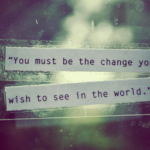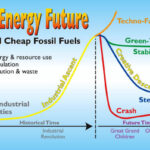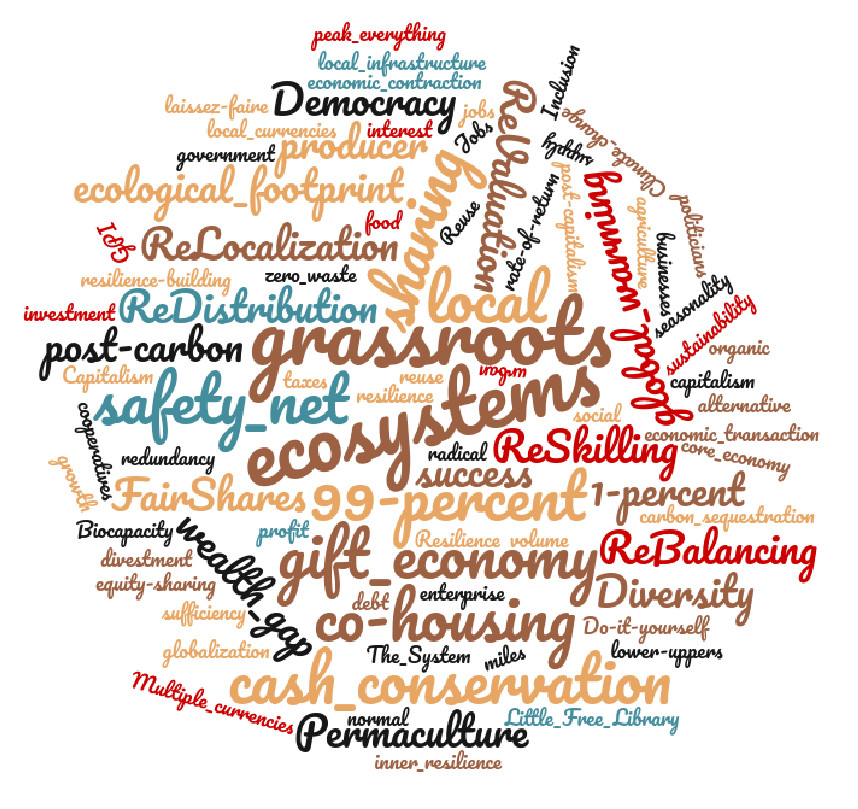The Climate Crisis
You undoubtedly know some things about global warming and climate change. Perhaps you know quite a lot about it, or perhaps you know a little bit. I’m not going to attempt to cover this topic comprehensively — that would take entire books on its own. But there are a few key points I want to cover, to make sure we’re all aligned in common understanding.
The theory of climate change
The first thing to understand is the theory of climate change. What is a theory? The conflict is well-stated on the American Museum of Natural History’s website:
In everyday use, the word “theory” often means an untested hunch, or a guess without supporting evidence.
But for scientists, a theory has nearly the opposite meaning. A theory is a well-substantiated explanation of an aspect of the natural world that can incorporate laws, hypotheses and facts. …
A theory not only explains known facts; it also allows scientists to make predictions of what they should observe if a theory is true. Scientific theories are testable. New evidence should be compatible with a theory. If it isn’t, the theory is refined or rejected. The longer the central elements of a theory hold—the more observations it predicts, the more tests it passes, the more facts it explains—the stronger the theory. (American Museum of Natural History, n.d.).
As change-makers, we need to be on the lookout for this gap in the understanding of the word “theory.” When people cross meanings — when they apply a vernacular understanding to a scientific usage of the word — that is when climate denial gains a foothold.
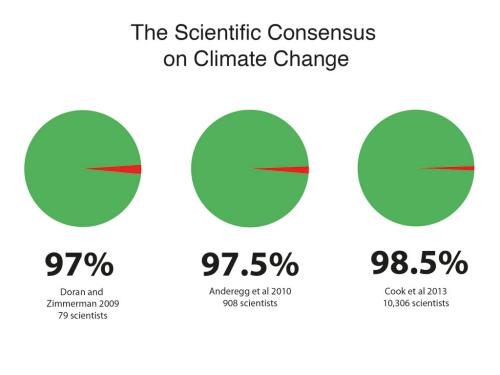
The scientific theory of global warming has been tested repeatedly since it was first presented in the work of Eunice Newton Foote in 1856. (Johnson & Wilkinson, 2020). Decades of observations and tests have supported and refined this scientific theory. By the standards of science, the understanding of global warming and climate change grows stronger with every year.
Global warming refers to the surface temperature of the earth. Climate change refers to the many changes that will occur with increases in temperature and greenhouse gases. (Hawken, 2017, p. xiii).
An existential threat
Climate change is an existential crisis — it threatens the very existence of humanity. Even though I’m writing this while under state-wide COVID shutdown, climate change is a far more dire threat to humanity than a global pandemic.
Renowned climate scientist James Hansen and his team said:
If humanity wishes to preserve a planet similar to that on which civilization developed and to which life on Earth is adapted, paleoclimate evidence and ongoing climate change suggest that CO2 will need to be reduced … to at most 350 ppm, but likely less that. (Hansen et al, 2008, emphasis added)
What Hansen was telling us is that life forms on this planet have never had to cope with such extreme conditions as climate change at its worst are forecast to bring upon us. We’re moving into uncharted territory.
The implication is: climate change could mean the absolute end of life on earth.
Changes we are seeing
“Climate change” sounds so mild. Global warming? So what’s a few degrees? Don’t we all like a sunny day at the beach?
Rather, what we’re beginning to see might better be called radical climate disruption.
Climate includes rainfall, snowfall, precipitation. Rainfall that waters fields and agricultural crops, rainfall that grows forests, snowpack that feeds city water supplies, precipitation that fills aquifers, feeds the source of wells. Climate includes whether we will have searing heat days, or incredible chill in which nothing can grow.
Climate turmoil is changing the flow of massive currents such as El Niño and La Niña, which drive weather patterns worldwide. We’re seeing extended regional droughts. Seasonal storms are causing worse flooding than ever before.
Climate change is melting glaciers, and that cold water flow is disrupting massive ocean currents that wrap the globe. You can think of it like an ocean circulatory system. This is upsetting salinity, the biochemical properties within the seawater, and that biochemical upset is devastating many species, including fisheries.
Melting glaciers, combined with increased temperatures, are leading to sea level rise, which is beginning to erode coasts around the world. Massive swaths of land, which even the earliest historical maps have counted on as dry land, are beginning to disappear underneath the oceans. We’re losing entire island nations.
Changes in climate are driving the spread of many diseases, such as malaria. It’s coming into areas where it’s never been a problem before. Scientists say that future pandemics are increasingly likely because of climate upset. We’re seeing what we could call “pandemics” in other organisms as well.
Every time I’ve mentioned weather, think about farm crops, think in terms of food supply — your food has to grow. Right now we are in a climate catastrophe. The steady, sedate weather patterns that farmers have relied upon to grow food crops — weather patterns that humanity has relied upon since the time of the agricultural revolution — are being thrown into turmoil.
We’re seeing record extreme heat days, record deep freeze, record wildfires. We’re seeing record category-5 hurricanes to the point that scientists may need to add additional categories to the hurricane scale.
And all of this is driven by burning fossil fuels: crude oil and its derivatives, natural gas, and coal.
The hockey stick
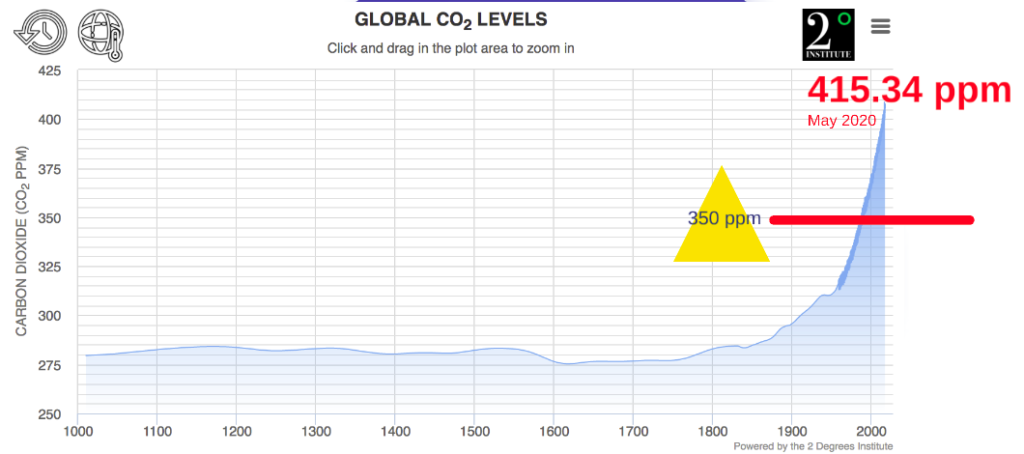
A diagram known as “the hockey stick” was created by climate scientist Michael Mann. It is based on carbon dioxide (CO2) levels observed in real-time measurement stations around the world, from tree ring studies (which go back hundreds of years) and glaciers (which go back centuries).
We see that for most of the course of recorded history, CO2 levels were rather steady. And then suddenly we have a huge spike. The spike begins right about the time of the Industrial Revolution — when mankind began burning huge volumes of coal.
350 ppm
The models of climate scientist James Hansen and his team calculated that there was an ecological limit to how high carbon emissions could go, before a series of interconnected catastrophic disruptions would begin to occur. The Hansen team calculated that limit was 350 parts per million (350 ppm).
As I write this, the level of CO2 concentration in the upper atmosphere hovers around 415ppm. (Co2.earth, 2021). Earlier in 2021 it hit a “worst ever” record of 421.21ppm. (Cappucci & Samenow, 2021). If you begin to monitor CO2 concentrations, you’ll learn that they fluctuate seasonally.
Some people say this is comparable to the planet “breathing.” Overall, we’re looking at the general trend, the moving average.
In more recent studies Hansen’s team and others have calculated that we may be able to avoid some of the worst disruptions if we rapidly pull those CO2 concentrations down below 350 ppm. This is currently the international understanding.
CO2 concentrations
What does that 350 ppm figure represent? Scientists are referring to CO2 concentrations in the upper layers of our atmosphere. That’s where the greenhouse effect does its deadly work.
Every time we burn anything down here on the surface of the planet — but particularly when we burn fossil fuels — we emit CO2 particles. These invisible gas molecules rise up, up, up into the upper atmosphere.
What’s the difference between carbon emissions and CO2 concentrations? Think of it like your kitchen sink: The faucet is like our carbon emissions from burning stuff. The drain is like the natural planetary systems for cleaning up the gasses from burning stuff. The sink basin is like our CO2 concentrations.
Say I turn on the faucet slightly. The water pours in from the faucet, but it drains right back out of the sink basin, through the drainpipe. There’s no accumulation in the sink basis. Back when the Chumash, the Tongva, the Kizh (pronounched Keech) and other indigenous people stewarded the land that’s now known as “Los Angeles,” gasses from a small cooking fire were no big deal. Nature kept things in balance.
But along came the Industrial Revolution. Suddenly, that faucet got turned on full blast. As the industrial ascent continued, it was like adding more and more faucets, simultaneously increasing the water flow. What do you think happened to our poor sink? Nature was still trying to clean up the gasses, but there was a limit to how much she could do.
Meanwhile, humans discovered ways to mine huge amounts of coal, then ways to extract oil and gas, and began burning more, more, more.
Humanity began razing forests, which were part of Nature’s clean-up system. We invented industrialized agriculture and began plowing soils, which slashed through yet another of nature’s carbon sequestration systems. Society invented landfills, which released methane and other greenhouse gasses, compounding the problem.
Our poor sink got overloaded. The drain could no longer handle it. The “water level” (that’s CO2 accumulations in the upper atmosphere) no longer drained away, it began to accumulate, to back up. That’s CO2 accumulations in the upper atmosphere.
Humans added cars, freeways, air traffic. More, more, more. At this point, the our “sink” is filling fast, bringing us to that record 421 ppm.
slash carbon emissions
increase carbon sequestration
What scientists are telling us is we need to get our “sink” back in balance. We need to “turn off the faucets,” which in real life means dramatically slashing carbon emissions. And we need to “pull the plug,” which in real life means increasing carbon sequestration by planting trees, restoring forests, and growing living soil (we’ll talk about this later in the series).
And once we understand the kitchen sink example, you’ll understand that we have a long-term project on our hands. This is not something we can fix with a few “more efficient” engines or with “50 Simple Things.” We need to drain that sink back below 350 ppm. And that demands radical systemic overhaul.
Reflection – climate
Think of a location that you love. Perhaps it’s your hometown. Perhaps it’s a favorite beach, or a park. (If you can’t think of anything, just use the place you live right now.) What do you love about this place?
Research what forecasts are for that spot on earth. What does science say is likely to happen? Seek regional forecasts for temperatures, precipitation, fires, storms, land loss to sea level rise, seawater incursion. What are scientific forecasts for local species: birds, insects, butterflies, mammals, trees, plants? Become aware of what is going on.
Lastly, go to that spot. Or, if you cannot go there right now, go to a nature spot near where you are. Sit. Just be. Listen to Nature. Observe. Allow the natural world to tell you about its vulnerabilities — and its strengths.
This post is part of the What We Can Do series — see the full project.

